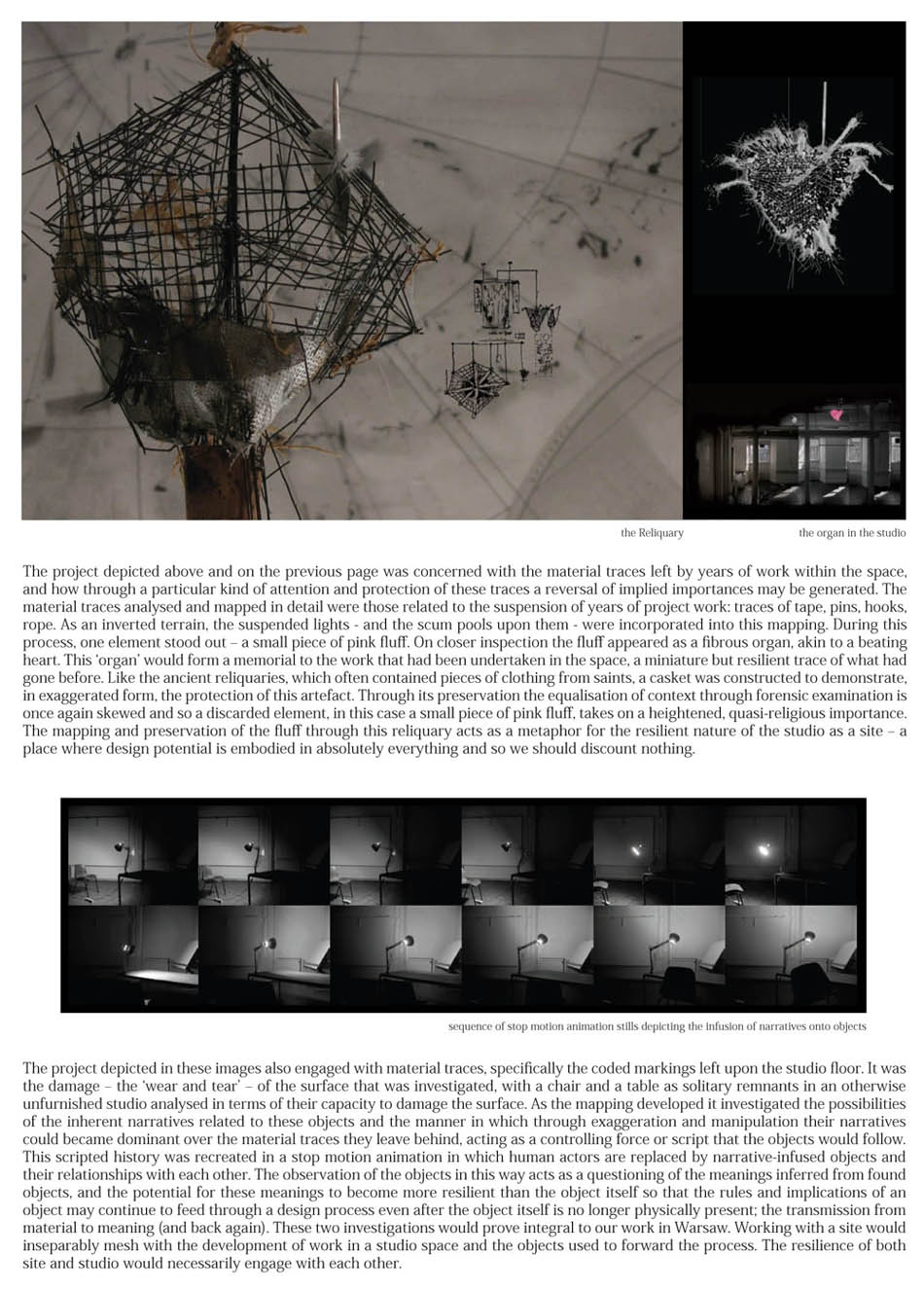 [Image: From the forthcoming Pamphlet Architecture #32 by Stasus].
[Image: From the forthcoming Pamphlet Architecture #32 by Stasus].The forthcoming Pamphlet Architecture #32, on the theme of "resilience," will be authored by Matt Ozga-Lawn and James A. Craig of Stasus, a young design firm based in Edinburgh and London.
 [Images: From the forthcoming Pamphlet Architecture #32 by Stasus].
[Images: From the forthcoming Pamphlet Architecture #32 by Stasus].The pamphlet, which will explore a series of post-industrial sites in the city of Warsaw—"a desolate area of disused freight rail tracks, commercial lots, gasometer buildings and other industrial apparatus," as the architects describe it—is more explicitly narrative than the other pamphlets that have been most recently published.
"The scope and intent of our book," Stasus writes, citing such influences as Piranesi and Andrei Tarkovsky's film Stalker, "is to highlight the importance of forgotten landscapes in our cities and the potentialities that can be extracted from them."
- A sprawling, unplanned city centre threatens a desolate landscape that still embodies many resilient aspects of the city. In many ways, the "value" of this landscape, though barren, could be said to exceed that of the new centre. The profound additional meanings inherent to a disused rail track in Warsaw, for example, eclipse the meanings inherent to a city block of financial skyscrapers. Rather than replace or erase these attributes, we aimed to augment the resiliency of the meanings that were embodied in every element of the landscape we stumbled across. As our design process progressed this methodology spread to every aspect of our thinking.
 [Images: From the forthcoming Pamphlet Architecture #32 by Stasus].
[Images: From the forthcoming Pamphlet Architecture #32 by Stasus].Their chosen strategy seems to have arisen directly from a course taught at the University of Edinburgh by professor Mark Dorrian.
As Dorrian himself explains, his students were urged "to set aside all familiar hierarchies, and recognize that dust, a discarded piece of paper or a scratch on the floor is as important as a window, cornice, column or door. We are in a situation in which everything counts—or at least in which we can discount nothing." Overlooked minor objects, apparently without use, and peripheral spaces of the city, apparently without residents, were thus taken as central to the course's architectural intentions.
 [Images: From the forthcoming Pamphlet Architecture #32 by Stasus].
[Images: From the forthcoming Pamphlet Architecture #32 by Stasus].For their part, Stasus interpreted this design brief as requiring the use of narrative in order to help them reveal their site's future spatial possibilities. In their own words:
- Once identified, the design process takes the form of a testing and investigation of the properties inherent to these existing landscapes of possibilities. The more resistant certain elements are to transformation, deletion, or manipulation, the more they are worked into the design process and become adapted within and integral to design "outputs." The approach is therefore vastly different from a blank-paper methodology. Rather than creating our own clearing for design work, we aim to identify the most resilient elements within our field of exploration. These may be meanings passed through material context, implied mythical narratives, incidental connotations, historical and pre-historical implications.
And it is the work that came out of that course that thus forms the conceptual backbone for the work that will soon appear as Pamphlet Architecture #32.



 [Images: Derelict landscapes and optical devices scaled up to the size of megastructures, by Stasus].
[Images: Derelict landscapes and optical devices scaled up to the size of megastructures, by Stasus].In his introductory essay for the pamphlets, Dorrian suggests that Stasus's work "draws upon the strange imagined half-lives of obsolescent and anachronistic things" that are "charged with the future."
Put another way, abandoned objects, locations, and spaces have a particular kind of architectural potential energy, a lack of precise definition that allows them to hover somewhere between promise and realization; however misleading it might actually be, then, dereliction implies a unique capacity for transformation—an ability to assume radically new spatial characteristics in the future—whilst simultaneously presenting what we could describe as fossils of an earlier world, one that has long since disappeared or ceased to operate.
 [Images: From the forthcoming Pamphlet Architecture #32 by Stasus].
[Images: From the forthcoming Pamphlet Architecture #32 by Stasus].In any case, I've included some preliminary images from the pamphlet here, as well as some project images by Stasus; for more, check out Stasus's website and keep your eye out for the Pamphlet itself, which I assume will be out sometime in the autumn.
Không có nhận xét nào:
Đăng nhận xét